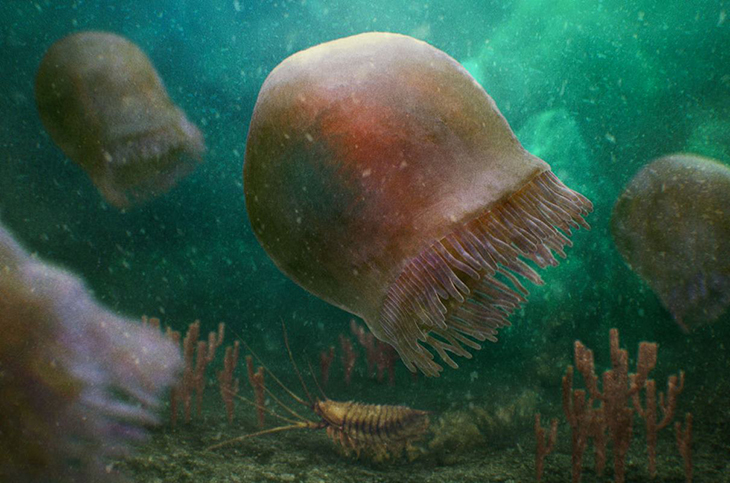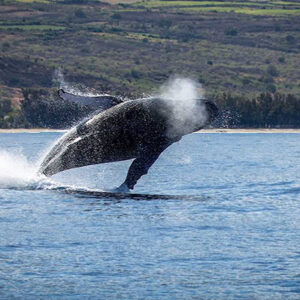
If we took a journey beneath the surface of the earth 500 million years ago, it would be filled with loads of ancient creatures that looked like trilobites or shrimp-like sea animals with giant lobster claws.
However, you’d also find that some creatures would be pretty recognizable, like the jellyfish, specifically one that looked a lot like a lampshade called the Burgessomedusa phasmiformis, which was recently identified by scientists as the oldest free-swimming jellyfish ever discovered.
This newfound revelation opens a portal to a treasure trove of insights into the intricate web of life during the Cambrian Explosion, which was considered a highly pivotal era in the planet’s history. This particular era was considered a time when there was a lot of experimentation to see which creatures could adapt to their new environment and which ones wouldn’t survive.
The Burgessomedusa phasmiformis, which was considered the star of this ancient spectacle, had a cube-like head that stretched nearly 8 inches in length. The hood was adorned with approximately 90 stubby tentacles, reminiscent of their modern-day jellyfish counterparts. Their tentacles, very similar to their modern relatives, probably served as instruments to paralyze their prey with stinging venom.
This new fossil was discovered in one of the most renowned geological formations tied to paleontology, called the Burgess Shale of British Columbia. It is thought that this formation came into existence when a colossal undersea landslide entombed a section of the seafloor, preserving even the soft-bodied jellyfish for eons, preventing them from decaying into nothingness.
Jellyfish belong to a phylum called Cnidaria, whose name was derived from a defining feature called cnidocytes, which are specialized cells primarily responsible for ensnaring prey. These ethereal creatures possess bodies composed of mesoglea, a non-living jelly-like substance that characterizes their unique physiology.
Cnidaria, which is believed to be among the earliest animals to grace the planet, face an intriguing challenge in the fossil record due to their lack of substantial hard body parts. Within the vast diversity of jellies that have inhabited Earth, the clade known as Medusozoa stands out, encompassing all the various jellyfish species that have existed. These creatures exhibit a captivating life cycle.
Beginning life as immobile, solid entities akin to sea anemones, and close relatives of jellyfish, these organisms undergo a remarkable transformation as they reach sexual maturity. This transformative phase sees the once stationary polyps metamorphose into free-swimming predators. It is speculated that this transition occurred in the common ancestor of all Cnidaria but was substantially lost in some of its descendants.
In terms of unearthing the past and exploring the past, Burgessomedusa phasmiformis seems to be the furthest anyone has ever gone.
Found by Joseph Moysiuk and his team at the Royal Ontario Museum, discovering these fossils provides amazing evidence. These fossils showcase the preservation of trilobites within the jellyfish hoods, implying that these ancient jellyfish possessed the ability to engulf their prey whole. While they may not have reigned as apex predators, they certainly ruled the seas alongside the Anomalocaris, the earlier mentioned giant clawed shrimp.
Co-author on the discovery, Jean-Bernard Caron, told Science Magazine, “There’s more work to be done with this fossil. Who knows who was eating what?”
What are your thoughts? Please comment below and share this news!
True Activist / Report a typo


